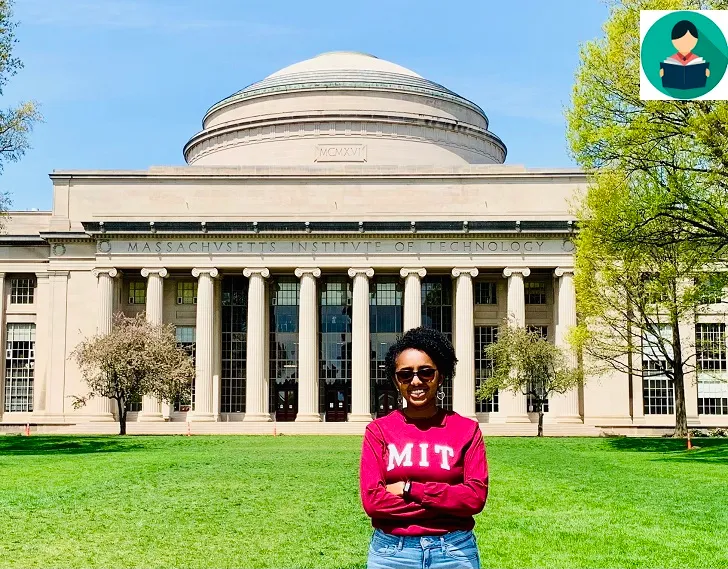Massachusetts Institute of Technology (MIT) is one of the top universities in the world. Its mission statement stresses its commitment to generating, disseminating, and preserving knowledge, and to working with others to bring this knowledge to bear on the world's great challenges. Admission to MIT started in 1865.
Schools and departments
School of engineering: aeronautics and astronautics, biological engineering, chemical engineering, civil and environmental engineering, electrical engineering and computer science, engineering systems division, materials science and engineering, mechanical, engineering, nuclear science and engineering.
School of humanities, arts, and social sciences: anthropology, comparative media studies, economics, foreign languages and literature, history, humanities, linguistics and philosophy, literature, music and theatre arts, political science, science-technology and society, writing and humanistic studies.
Sloan School of Management: management
School of science: biology, brain and cognitive sciences, chemistry earth, atmospheric, and planetary sciences, mathematics, physics
Whitaker College of Health Sciences and Technology
Harvard-MIT division of Health Sciences and Technology
MIT-WHOI Joint Programme in oceanography and applied ocean science and engineering
Degrees Offered at MIT Bachelor of Science (SB), Master of Architecture (M.Arch.), Master of Business Administration (MBA), Master in City Planning (MCP), Master of Engineering (M.Engg.), Master of Finance (M.Fin.), Doctor of Philosophy (Ph.D.), Doctor of Science (ScD)
There are more than 4,000 undergraduate and 6,000 graduate students. The number of applicants for admission is usually so large that only about 12 per cent of them get an offer to join.
Approximately 400 international students attend the undergraduate programmes; their graduate counterparts may be around 2,500. Half of them would be from Asian countries.
The number of professors on all ranks put together comes to more than a thousand, and the total staff strength around 11,500. A total of seventy-three members of the MIT community, both present and former put together have won the Nobel Prize. The list includes seven current members of the faculty.
Cost of education
The tuition fee for the undergraduate and graduate programmes is the same. It would be around $37,000 per year. For the undergraduate programmes, food and accommodation would cost $11,000, and another $3,000 would be required for books and personal expenses. More than 60 per cent of the students receive some kind of need-based financial aid. The financial position of the family is a criterion in fixing the aid.
Undergraduate students usually attend the institute only for nine months (academic year), whereas the graduates will have to attend the institute for twelve months (calendar year), thereby increasing the expenses. The on-campus housing for graduates may come to $ 500-$1400 a month, depending on the quality of life. Financial support to graduates includes fellowships, traineeships, teaching and research assistantships, and loans. Most forms of support are granted based on merit. But certain items of support may take into account merit as well as the need of the student.
Graduate education
For graduate admission, you may get in touch with MIT, 77 Massachusetts Ave., Room 3-103, Cambridge, MA 02139-4307, USA; Ph: 617-253-2917; e-mail: mitgrad@mit.edu, or/ and the International Students Office (Room 5-133) at the same address; e-mail: iso-help@mit.edu.
The admissions process for graduate programs at MIT is decentralized. You may apply directly to the concerned academic department. There is no fixed number of seats. Each department would admit as many as it can support. Admission is based on academic potential, personal qualifications, professional promise, and outstanding interests, activities, and achievements.
Research
The approach of MIT quoted below will fire the passion for research in any enterprising student. “MIT's commitment to marrying education with the creation of knowledge provides a fertile setting for research that has spawned a host of scientific breakthroughs and technological advances.”
There are numerous instances of MIT breaking new ground in diverse fields, especially in science and technology. The creation of modern food preservation processes, the first chemical synthesis of penicillin and vitamin A, the development of inertial guidance systems, modern technologies for artificial limbs, high-speed photography, and the magnetic core memory that made possible the development of digital computers are only some of them. Life sciences and engineering are not confined to water-tight compartments. There is a convergence of the two significant areas of knowledge. The faculty and students from different fields often work together on inter-disciplinary projects.
Accommodation
Most undergraduates live on campus in one of MIT's eleven Institute houses or 36 MIT-affiliated fraternities, sororities, and living groups. Graduate students also get campus accommodation.
Educational partnership
MIT maintains partnerships and collaborations with leading educational institutions in the US and abroad. The Cambridge–MIT Exchange program is an example. MIT juniors study for a year at the University of Cambridge, England, while Cambridge undergraduates spend a year at MIT. At present, 14 MIT departments participate in the program. Harvard–MIT Division of Health Sciences and Technology is another instance.
The “MIT International Science and Technology Initiatives” promotes closer ties among scientists, engineers, and industrial managers in the United States and other countries. More than 300 undergraduate and graduate students from various countries study at MIT participating in MISTI programs each year. The Singapore–MIT Alliance is an innovative engineering education and research collaboration by three premier academic institutions: MIT, the National University of Singapore, and the Nanyang Technological University.
For more specific information on education in MIT, you may directly get in touch with the institute (Ph: 617-253-4795) or visit the site >http://web.mit.edu.
For details on engineering programmes, visit http://engineering.mit.edu. Details of study programmes and research in each branch of engineering / technology can be traced through the appropriate links.
